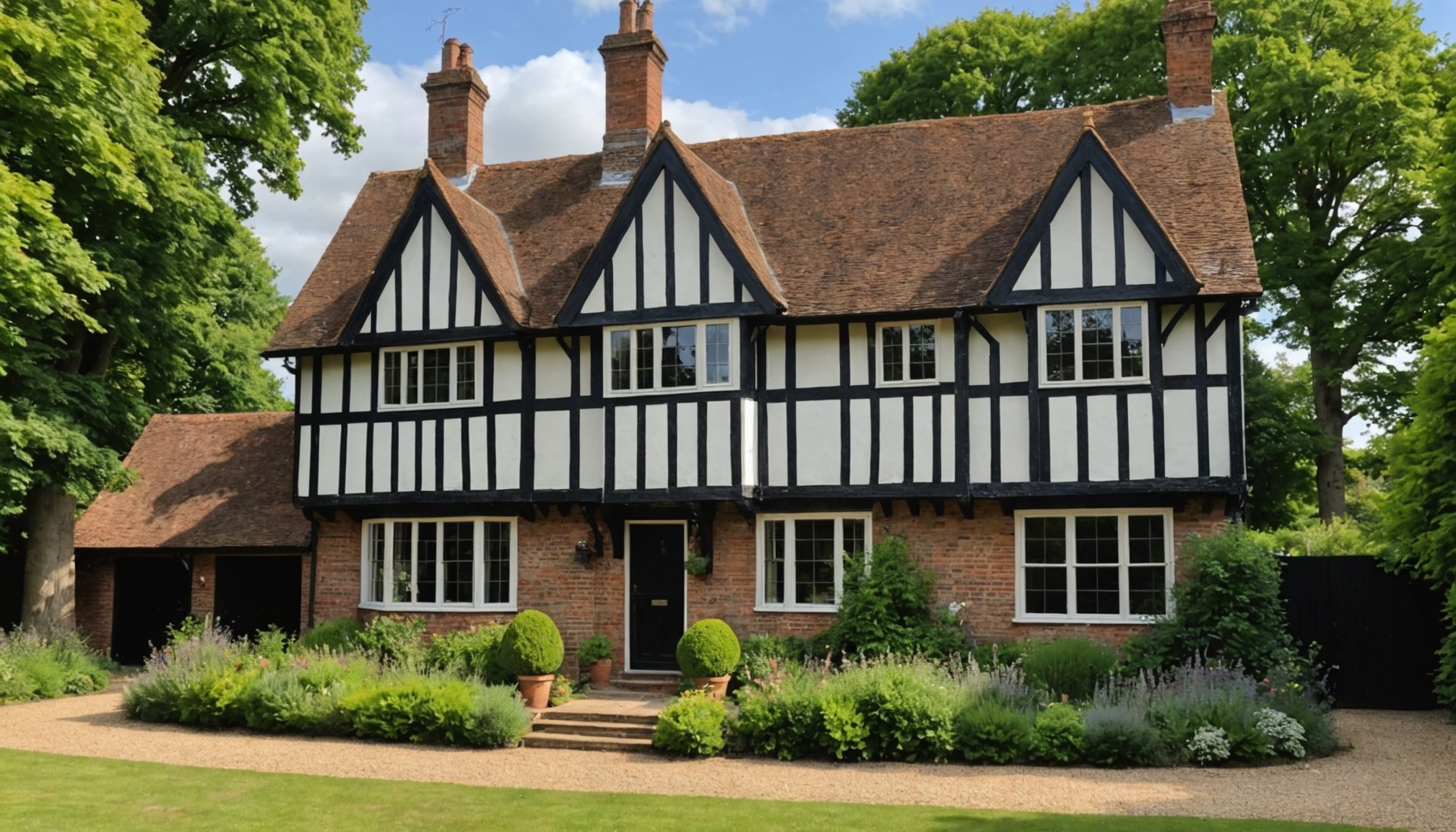For Tudor homeowners in Suffolk, striking the perfect balance between honoring historical elements and incorporating modern style can be challenging. This guide offers practical tips and creative ideas to navigate the restoration process. Discover how to preserve enchanting features like exposed beams and leaded windows, while blending them seamlessly with contemporary aesthetics. Restore your Tudor home’s charm and functionality, ensuring it remains a captivating sanctuary that reflects both its storied past and your personal vision.
Overview of Tudor Architecture and Its Significance
Tudor architecture, a style that flourished during the late medieval period, is renowned for its distinctive features and historical significance. This architectural style is characterised by its half-timbered walls, steeply pitched roofs, and tall, narrow windows. These elements not only define the aesthetic appeal of Tudor-style homes but also reflect the construction techniques and materials available during the era.
Avez-vous vu cela : Effective Strategies to Ward Off Bathroom Mold in Windowless UK Spaces
In Suffolk, the historical context of Tudor architecture is deeply intertwined with the region's cultural heritage. The period saw a surge in prosperity, leading to the construction of elaborate homes and public buildings. These structures served as symbols of wealth and status, showcasing intricate craftsmanship and design. The cultural significance of Tudor architecture extends beyond its visual appeal; it represents a pivotal moment in history where architectural innovation met societal change.
Preserving the architectural heritage of Tudor buildings is crucial for maintaining a tangible connection to the past. It allows us to appreciate the artistry and ingenuity of earlier generations while providing insight into historical lifestyles and values. Efforts to conserve these structures ensure that future generations can continue to learn from and be inspired by this remarkable architectural style.
Avez-vous vu cela : Unlocking Your Loft: Essential Legal Guidelines for Loft Conversions in Birmingham
Assessing Your Tudor Home's Condition
Before embarking on any restoration project, a comprehensive home assessment is essential. This involves a detailed property inspection to evaluate the structural integrity of your Tudor home. Key areas to examine include the roof, walls, and foundation, as these elements are crucial to maintaining the building's stability and historical accuracy.
During the inspection, it's vital to identify original features that are worth preserving. Elements such as half-timbered walls, leaded glass windows, and ornate woodwork are significant to the home's historical value. Preserving these features not only maintains the architectural authenticity but also enhances the property's charm and appeal.
Modern alterations can significantly impact the historical integrity of a Tudor home. It's important to evaluate these changes carefully. Some modifications might have been necessary for safety or functionality, but they could detract from the home's original character. Understanding the extent of these alterations helps in planning a restoration that respects the home's historical essence while accommodating modern needs.
A detailed restoration evaluation provides a roadmap for maintaining the delicate balance between preserving history and ensuring the home's usability. Engaging professionals experienced in Tudor architecture can offer valuable insights and recommendations, ensuring your restoration efforts are both respectful and effective.
Restoration Techniques for Traditional Features
Preserving the authenticity of a Tudor home requires meticulous attention to traditional materials and restoration techniques. Timber framing, a hallmark of Tudor architecture, often demands careful restoration. Best practices involve assessing the wood's condition, replacing only severely damaged sections, and using traditional materials to maintain authenticity. Traditional materials like oak should be sourced to match the original construction.
Plasterwork, another key feature, requires a gentle touch. When restoring plaster, it's crucial to use lime-based mixtures, as these were typical in the Tudor period. These mixtures allow the walls to breathe, preventing moisture build-up and ensuring durability.
Leaded windows, with their intricate designs, are essential to a Tudor home's charm. Repairing these requires precision. Techniques include carefully removing damaged lead came and replacing it with new lead, while preserving as much of the original glass as possible.
Stonework, often found in fireplaces and foundations, should be assessed for structural integrity. Restoration involves cleaning and repairing stone using traditional methods, ensuring that the original appearance is retained.
Sourcing authentic materials is vital. Seek local suppliers who specialise in historical materials to ensure your restoration efforts are both accurate and respectful of the home's heritage.
Integrating Contemporary Design Elements
Blending contemporary design with the traditional charm of a Tudor home requires a thoughtful approach to ensure harmony between the old and the new. By focusing on modern aesthetics, homeowners can enhance their living spaces while preserving the historical essence of their property.
One effective strategy is to maintain the traditional exterior while introducing modern interiors. This can be achieved by using neutral colour palettes and sleek finishes that complement the rich textures of Tudor architecture. For example, pairing minimalist furniture with the intricate woodwork of a Tudor home can create a balanced and inviting atmosphere.
When selecting contemporary furnishings, it's important to choose pieces that respect the home's historical context. Opt for furniture with clean lines and simple forms that echo the home's architectural features. Incorporating modern lighting fixtures can also accentuate the home's unique characteristics while providing functional illumination.
Successful home renovation projects often involve a careful blend of styles. Consider the case of a Tudor home where modern glass extensions were added to create open, light-filled spaces without detracting from the original structure. This approach highlights how contemporary elements can enhance a Tudor home, providing comfort and style while honouring its historical roots.
Sustainable Practices in Tudor Home Restoration
Embracing sustainable restoration in Tudor home projects involves balancing historical preservation with modern eco-friendly practices. Incorporating energy efficiency systems can be achieved without compromising the home's historical integrity. For example, installing discreet insulation or energy-efficient glazing can significantly reduce energy consumption while maintaining the building's authentic character.
Utilising eco-friendly materials is another essential aspect of sustainable restoration. Opt for materials like reclaimed wood or natural stone, which not only match the original construction but also reduce the environmental impact. These choices support the home's aesthetic while promoting sustainability.
Integrating green technologies can offer numerous benefits in older homes. Solar panels, when installed sensitively, provide renewable energy without altering the home's appearance. Similarly, implementing rainwater harvesting systems can reduce water usage, contributing to the home's overall sustainability.
Sustainable practices in Tudor home restoration not only preserve the architectural beauty but also ensure these historic structures remain functional and environmentally responsible. By prioritising energy efficiency and eco-friendly materials, homeowners can enjoy a comfortable living space that honours the past while embracing the future.
Local Resources and Expert Insights
Restoring a Tudor home requires a blend of local resources and expert advice to ensure authenticity and quality. Finding skilled local craftsmen is essential. These artisans possess the expertise needed to handle the delicate restoration of Tudor features, such as timber framing and leaded windows. Their knowledge of traditional techniques ensures that the restoration respects the home's historical integrity.
Consulting with historical preservation societies can provide invaluable expert advice. These organisations offer guidance on maintaining architectural authenticity and can connect homeowners with trusted professionals in the field. They also provide insights into the best practices for preserving historical details while accommodating modern needs.
Utilising local suppliers is crucial for sourcing authentic materials and décor. These suppliers often specialise in historical materials, such as reclaimed wood and traditional plaster, which are necessary for maintaining the character of a Tudor home. By working with local resources, homeowners can ensure that their restoration efforts are both accurate and respectful of the home's heritage.
Engaging with architectural services that focus on historical restoration can further enhance the project. These services bring a wealth of experience and knowledge, ensuring that every aspect of the restoration is handled with care and precision, preserving the home's historical essence.
Visual Inspiration for Your Tudor Restoration
Finding the right design inspiration is crucial when planning a Tudor home renovation. Curating a collection of before-and-after images from successful Tudor restorations can provide invaluable insights. These visual examples showcase the potential transformations, highlighting how traditional elements can be preserved while integrating modern touches.
A renovation gallery is an excellent resource for homeowners seeking inspiration. Many design magazines and websites specialise in historical homes, offering a plethora of ideas tailored to Tudor architecture. These platforms often feature detailed case studies and expert recommendations, aiding in visualising the possibilities for your own project.
Visual aids play a significant role in the planning process. They help homeowners understand how different design elements can coexist harmoniously. By examining various examples, you can identify styles and features that resonate with your vision, ensuring a cohesive and respectful renovation.
Exploring diverse sources of visual inspiration not only sparks creativity but also provides a roadmap for your Tudor restoration. Whether it's through curated galleries or specialised publications, these resources are instrumental in crafting a renovation plan that balances historical authenticity with contemporary design sensibilities.
Maintaining Your Restored Tudor Home
Ensuring the longevity of a restored Tudor home requires a dedicated approach to home maintenance and preservation. Regular upkeep is crucial to preserving the historical elements that define these structures. Begin with periodic inspections of timber framing, leaded glass windows, and plasterwork to identify any signs of wear or damage. Address issues promptly to prevent further deterioration.
Incorporate seasonal care tips to protect your Tudor home throughout the year. During colder months, ensure that the roof and gutters are clear of debris to prevent moisture damage. In warmer seasons, inspect and treat woodwork to guard against pests and weathering. Seasonal adjustments help maintain the home's structural integrity and aesthetic appeal.
Planning for future renovations is essential while maintaining the home's historical integrity. When considering updates, prioritise elements that enhance functionality without compromising the home's character. Engage with professionals who specialise in historical restoration to ensure any changes respect the original design.
By implementing strategic preservation strategies and a proactive maintenance routine, homeowners can ensure their Tudor homes remain beautiful and historically significant for generations. This commitment to long-term care not only protects the investment but also honours the architectural heritage of these remarkable structures.











